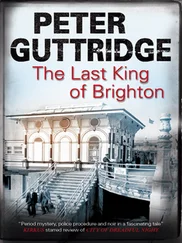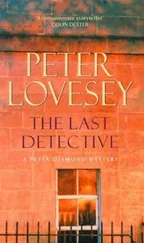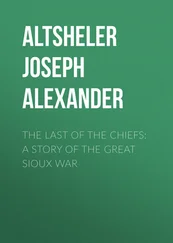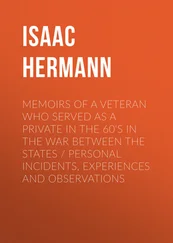Others who visited the battlefields had been there not long before. While it is easy to see why veterans might wish to visit the battlefields and cemeteries many years later, the notion of them returning to places where they had so recently endured appalling conditions, and which nature had yet to heal, may strike us as odd. Many veterans were haunted by their experiences at the front, experiences they would be unable to forget however long they lived. These were not experiences that were easy to talk about or share with civilians, even if they were friends or family. Siegfried Sassoon made his notorious public protest against the political conduct of the war in 1917 on behalf of his suffering fellow soldiers partly in the belief that ‘it may help to destroy the callous complacence with which the majority of those at home regard the continuance of agonies which they do not share, and which they have not sufficient imagination to realise’. Now that the war was over, veterans were naturally wary of harrowing their families and friends, or worse still boring them, with stories from the trenches. ‘There was nobody interested anyway,’ George Louth recalled, ‘so it was useless telling them and if you did they would only laugh at you, say it wasn’t true. It wasn’t a conscious thing, nobody talked about the First War in those days, even my wife, even she never heard my story and we were married seventy years.’ Louth had joined up in 1915 at the age of eighteen and survived the first day on the Somme in 1916, but was invalided out in December of that year. He would live to celebrate his 103rd birthday in 2000, but ‘only once spoke about [the war] from 1918 until 1990’. This was to a woman enquiring after her husband, who had been ‘blown to pieces’ but was officially listed as ‘wounded and missing’. Harry Patch too never spoke about the war. He married happily in 1919, but not once in fifty-seven years of wedded life did he mention the war to his wife. ‘I don’t think she had any idea about my service, and never brought it up.’
Many veterans felt as if they had been set apart from civilian life altogether, and that the only people with whom they could truly share their feelings were those they had served alongside. The veterans’ organisations not only campaigned for the rights of ex-servicemen, they also provided former soldiers with a community and would organise visits to France and Belgium. Ex-servicemen had been among both cemetery pilgrims and battlefield tourists from the very outset, paying their respects to friends who had been buried in haste and without pause for mourning, or visiting places where they had undergone what was fast beginning to seem the defining experience of their lives.
For some, the Western Front had proved so overwhelming that it became the only place they felt they belonged. The Imperial War Graves Commission needed hundreds of gardeners to tend the cemeteries it was building, and it recruited these from among former servicemen. By 1921, 1,326 veterans were employed by the Commission, and they had not only planted over 15 miles of hedges and 75 miles of borders, but had also seeded some 200 acres of bare earth with grass. Many of them spent the rest of their lives in France and Belgium, often marrying local women. Captain Frederick Osborne of the Royal Fusiliers, for example, joined up in 1914 with five friends and fought throughout the war, at the end of which he was the only survivor of the original group. After being demobilised, he returned to the Ploegsteert region and took a job looking after cemeteries. He married a Flemish woman, learned the language, and made his life in Belgium, staying on there after his retirement in 1962.
Britain itself continued to be something of a battlefield during the early 1920s with Armistice Day becoming a focus not only of national mourning but of protests intended to remind everyone that those who had returned from the war were still awaiting a home fit for heroes. In October 1920, disturbed by the continuing rise in unemployment (which still included a large number of ex-servicemen), a group of London mayors headed by the Mayor of London and future leader of the Labour Party, George Lansbury, requested an interview with Lloyd George at Downing Street. In support of this deputation, large numbers of the unemployed, many of them wearing their combat medals, descended upon Whitehall. According to Wal Hannington, the trade union official who was leading a North London contingent that day, the crowd was orderly, doing little more than cheering and singing. Nevertheless, Whitehall became severely congested and in order to clear the street mounted policemen charged the crowds, who were packed in so tightly on all sides that they could not retreat and ‘were compelled to fight back at the police or simply stand still and be clubbed down’. Eventually, the police were beaten back and the crowd surged up towards Trafalgar Square, but were stopped by reinforcements who struck the workers down as they tried to escape. Hannington recalled that ‘dozens of men lay in the roads and on the side-walks groaning with pain as the blood gushed out from wounds inflicted by police batons’. Then a policeman was dragged off his horse, which was commandeered and mounted by an unidentified worker who broke through police lines at a gallop, while men on foot followed in his wake. He managed to reach Downing Street before being ‘clubbed down’. The police eventually restored order and the crowd dispersed.
Wal Hannington’s Unemployed Struggles 1919–1936 , from which this account is taken, may be one of the great classics of the British working-class movement, but it is a work of polemic and not always accurate. Hannington’s version of events, recalled some fifteen years later, is at odds with the contemporary reports of this incident in The Times , for example. The newspaper agreed that the crowd was ‘fairly orderly, though noisy’, and that the mounted police used newly introduced ‘long staves’ to belabour the protesters, between thirty and forty of whom suffered injuries, mostly to the head. The newspaper reported, however, that police had been obliged to intervene because a group of the unemployed decided to go to Downing Street to protest rather than, as had been originally planned, wait on Victoria Embankment for the deputation of mayors to report back on their interview with Lloyd George. These protesters ‘were heavily reinforced by many hundreds of irresponsible young hooligans who took a leading part in the afternoon’s disorders’. These young men apparently threw bottles, stones and brickbats at the police and caused considerable damage to government buildings: the stone balustrade of the Privy Council Office was demolished, several windows were broken at the Treasury and every single window was smashed on the ground floor of the War Office.
Hannington’s claim that ‘The mayors had not been received by Mr Lloyd George. He was not apparently interested in hearing about the plight of the workless and had conveniently left London’ was untrue. Indeed, Lansbury emerged from Number 10 after a meeting with the Prime Minister and attempted to restore order among his supporters. Furthermore, Hannington’s ‘unknown hero on the white horse’ was neither an ‘ex-cavalry man’ nor even a member of the unemployed, but a nineteen-year-old packing-case maker from Hoxton called Edward Cannadine, who had been exercising a horse and had ‘turned into Whitehall to see the demonstration’. At Bow Street Magistrates’ Court the following morning, he claimed that ‘Someone struck the horse, which got out of control, and he was unable to prevent it charging the police’. Quite what someone from Hoxton was doing exercising a horse in the middle of London was not divulged, but the horse clearly hadn’t been taken from the police since it had no saddle. Nevertheless, the court declined to believe that Cannadine was an innocent passer-by caught up in events beyond his control and fined him 40 shillings for ‘insulting behaviour’. A number of other protesters were charged with a variety of offences, including three men who had taken the opportunity to break into a jeweller’s and make off with £3,000 worth of diamond rings.
Читать дальше












